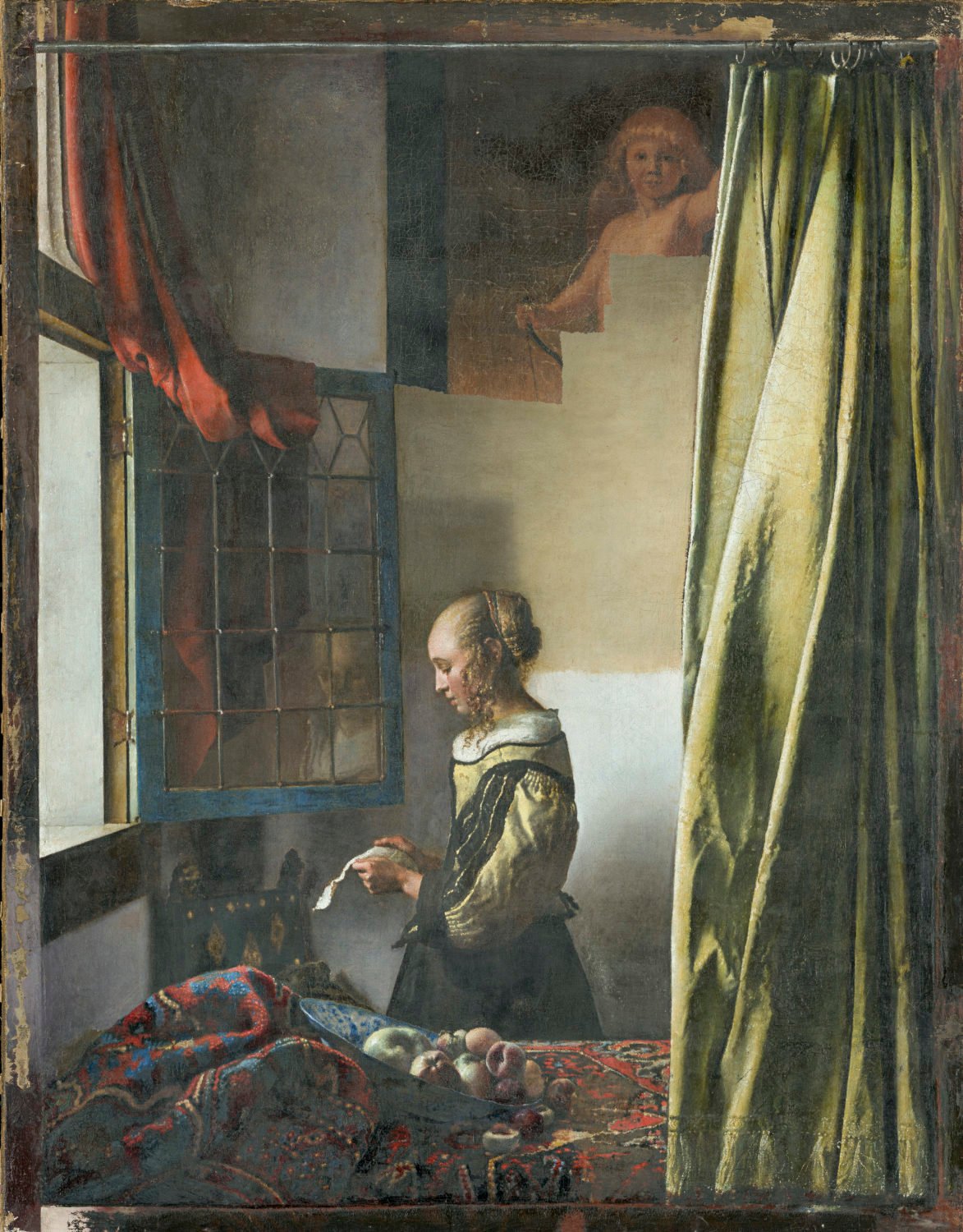
Johannes Vermeer’s Girl Reading a Letter at an Open Window was not alone. Experts are currently uncovering an image of a large cupid that was hanging on the wall behind her.
More than two and a half centuries later, laboratory tests have determined beyond a doubt that the symbol of love was covered up decades after the Dutch artist’s death in 1675. Previously it was thought that Vermeer had covered up cupid himself.
The Staatliche Kunstsammlungen Dresden in Germany has decided to remove the overpainting from the Dutch Old Master’s work, which normally hangs in the institution’s Gemäldegalerie Alte Meister. The museum plans to restore the work according to Vermeer’s original intention, which conveys that the young woman is reading a love letter.
Stephan Koja, the director of the Gemäldegalerie Alte Meister, has called the new composition “sensational.”
Girl Reading a Letter at an Open Window is on view as of today, May 8, in its intermediate state of restoration (it will stay on display until June 16, 2019) before the rest of the overpaint will be removed. So far, the long-hidden cupid is only half showing.
Restoration of Vermeer’s Girl Reading a Letter at an Open Window. Copyright Staatliche Kunstsammlungen Dresden
The existence of the cupid has long been known by researchers. In 1979, an x-ray first revealed the image of the naked god of love, either in a frame or as a framed fresco within the painting. At the time, it was thought that Vermeer had overpainted the figure himself, preferring instead the resulting empty wall.
In 2017, the Staatliche Kunstsammlungen Dresden’s painting conservator Christoph Schölzel began working on the famous canvas. X-ray, infrared reflectography imaging, and microscopic analyses were then re-evaluated in Dresden. The project included a detailed analysis of the underlying layer of the canvas, research on the painting’s history of restoration, and comparisons with Vermeer’s other works and restorations. The data that came back was decisive: The painting had been overpainted after the artist’s death, at least several decades later.
Due to the time-intensive, painstaking process of removing the overpaint, it is expected that the complete restoration of the painting will take at least another year.
“The elements of veiling and disguising play a less dominant role in this early work by Vermeer than the composition with the background altered by another hand has led us to believe for two and a half centuries,” said Uta Neidhardt, the senior conservator at Dresden’s Gemäldegalerie. With a cupid watching over, a love story is now more strongly implied between the girl and the mysterious author of the letter.
The cupid also bears a striking similarity with another painting that features in Vermeer’s A Young Woman Standing at a Virginal in the National Gallery in London. Scholars have claimed that the cupid image may have been inspired by Vermeer from a real picture in his possessio: a 1676 inventory of his widow’s belongings included mention of “a Cupid,” according to The Art Newspaper. According to the National Gallery, the “painting within a painting” of cupid in A Young Woman Standing at a Virginal is attributed to Cesar van Everdingen.
Vermeer painted relatively few paintings in his lifetime and died in debt. His oeuvre of around 40 works, includes Girl With a Pearl Earring, Girl Reading a Letter at an Open Window, and Woman Holding a Balance, which are among the most well-known paintings in the world.